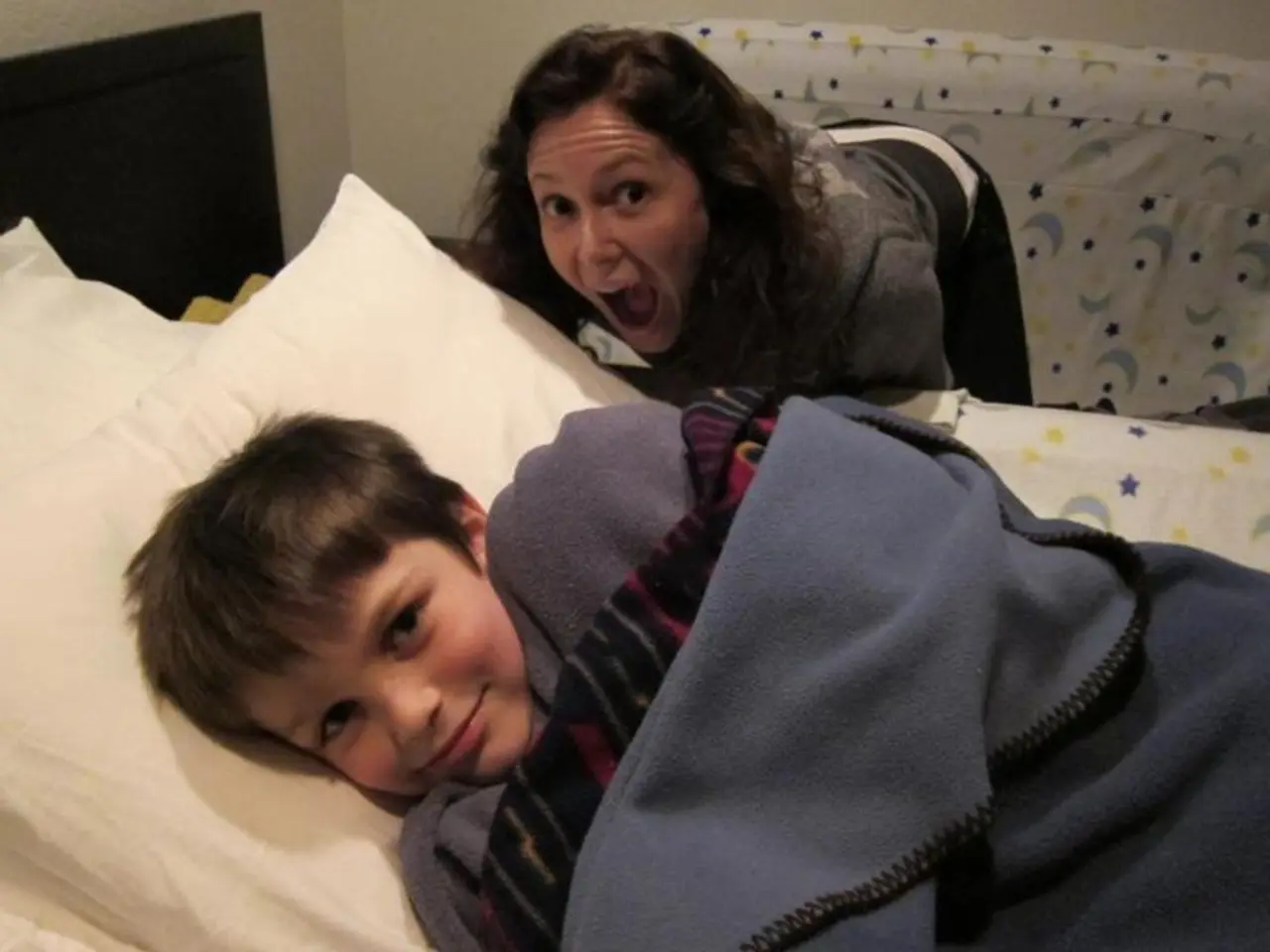Uncommon Sleep-Related Sexual Behavior Disorder: Essential Facts About Sleep Sexomnia
Sexsomnia, a little-known sleep disorder, is a type of parasomnia that causes individuals to engage in abnormal sexual behaviors while asleep, primarily during the non-rapid eye movement (NREM) sleep cycle. This condition, categorised as an NREM sleep arousal disorder in the Diagnostic and Statistical Manual of Mental Disorders, 5th edition (DSM-5), is extremely rare, predominantly affecting younger men who live with other NREM parasomnias.
Sexsomnia is treatable, and it's possible to lead healthy relationships while living with it. However, it can cause people to behave in ways they would never choose to while awake, such as being sexually aggressive or initiating sex with someone they would not engage with otherwise. This can negatively impact a person's sleep schedule, stress levels, and romantic relationships.
Untreated sleep disorders like sexsomnia can lead to serious complications such as mood disorders, anxiety disorders, sleep deprivation, false memories, and impaired cognitive functioning. Partners of people with sexsomnia can experience a greater burden from the sleep condition than the person living with it.
Seeking help from a therapist, medical professional, or sleep specialist can help in developing a treatment plan to manage sexsomnia and improve sleep quality. Strategies for managing sexsomnia may include anti-anxiety or antidepressant medications, lifestyle adjustments, improving sleep quality, seeing a therapist, and making changes to sleep routines. Holistic remedies for managing sexsomnia may include valerian root, magnesium supplements, and reducing alcohol use.
Open communication and mutual support can help navigate and build healthy relationships for those affected by sexsomnia. Navigating boundaries and consent can be difficult during sexsomnia episodes, potentially leading to consent and boundary violations, sexual assault, or sexual abuse. It's crucial to address these issues with a healthcare provider to ensure a safe and supportive environment for all parties involved.
It's important to note that sexsomnia differs from hypersexuality, which involves increased sexual desire and behaviors due to various physical or psychological causes. The cause of sexsomnia is not clearly defined, but it is generally understood as a type of parasomnia related to sleep disorders where a person engages in sexual behaviors while asleep.
In conclusion, while sexsomnia is a rare sleep disorder, it can have significant impacts on a person's life and relationships. Seeking help from a healthcare professional is vital in managing the condition and improving overall well-being. By understanding sexsomnia and addressing its complexities, we can work towards creating a supportive environment for those affected by this condition.
Read also:
- Peptide YY (PYY): Exploring its Role in Appetite Suppression, Intestinal Health, and Cognitive Links
- Toddler Health: Rotavirus Signs, Origins, and Potential Complications
- Digestive issues and heart discomfort: Root causes and associated health conditions
- House Infernos: Deadly Hazards Surpassing the Flames







